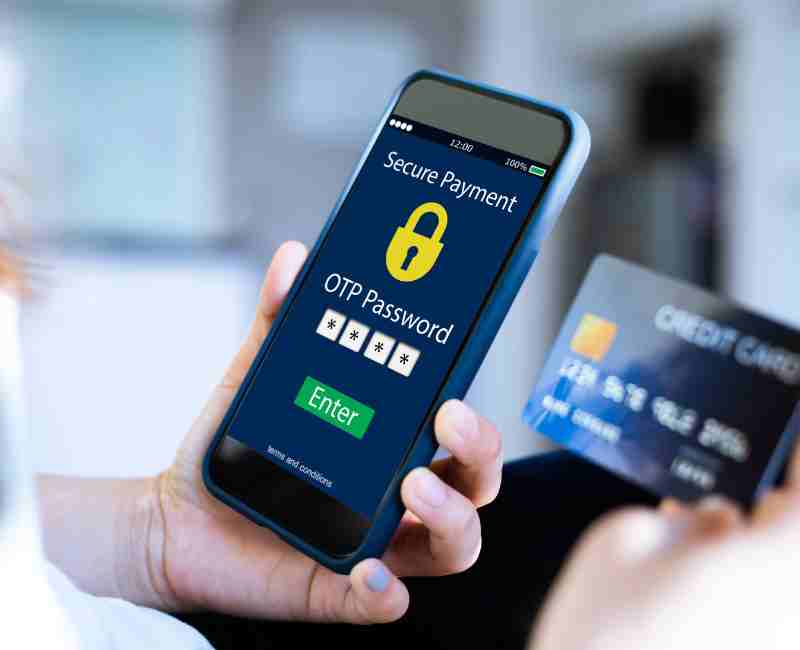The significance of strong passwords cannot be overstated. As our lives become increasingly intertwined with the online world, the security of our personal and professional information hinges on the strength of our passwords. This underscores the necessity of using strong passwords for online security, a principle that acts as the first line of defense against unauthorized access to our digital accounts.
However, the dangers of simple passwords and those that are easy-to-guess are often underestimated. Simple passwords might be convenient, but they are akin to leaving the front door of your house unlocked. Easy-to-guess passwords, such as “123456” or “password,” are the equivalent of an open invitation to cybercriminals. These weak passwords can easily be cracked, leading to compromised accounts, identity theft, and financial loss.

The Evolution of Password Security
Over time, password security has had to evolve rapidly to keep pace with the advanced tactics of hackers. In the early days of the internet, passwords were often short and simple, as awareness of cyber threats was relatively low. However, as technology progressed, so did the techniques of those looking to exploit online vulnerabilities.
Hackers began employing methods like dictionary attacks, where common words or phrases are systematically guessed. This led to a shift towards more complex passwords, integrating numbers, symbols, and a mix of upper and lower case letters. But even these were not foolproof. With the advent of more sophisticated hacking techniques, such as phishing scams and brute-force attacks, password security needed to be further reinforced.
To counter these threats, the concept of a strong password evolved. Now, not only complexity but also length have become important, giving rise to the use of passphrases. Additionally, the realization that even strong passwords could be compromised led to the adoption of multi-factor authentication methods, adding an extra layer of security.
Why is a strong password is Essential?
In today’s digital era, the importance of a strong password cannot be overstated. It serves as the primary barrier between your personal information and potential intruders. Unfortunately, the risks associated with a weak password are numerous and serious. Weak passwords are akin to low-hanging fruit for cybercriminals; they are easy to crack and can lead to unauthorized access to your sensitive data. This can result in identity theft, financial loss, and even damage to your personal and professional reputation.
On the flip side, a strong password acts as a formidable fortress against unauthorized access, significantly reducing the risk of hack attempts. It can deter hackers from attempting to access your account, as the effort required to breach a strong password often outweighs the potential gain. In essence, a strong password is not just a deterrent but also a key defensive tool in your cybersecurity arsenal.
The Anatomy of a Strong Password
Understanding the characteristics of a strong password is crucial to crafting one. A strong password typically includes a mix of the following elements: uppercase letters, lowercase letters, numbers, and special characters. This combination creates a complex password that is difficult for hackers to guess or crack using automated tools.
However, it’s not just about mixing different characters. The length of the password plays a significant role in its strength. Generally, a longer password is more secure. This is because the number of possible combinations increases exponentially with each additional character, making it exponentially harder for a hacker to guess or break through brute-force attacks.
Best practices for creating a strong password include:
- Avoiding Common Words: Do not use easily guessable words like “password” or “123456.”. Hackers often use these common passwords as their first attempt.
- Steer Clear of Personal Information: Avoid using easily accessible information like birthdays, anniversaries, or names of pets. This information can often be found on social media and used in targeted attacks.
- Embrace unpredictability: Create a password that doesn’t follow predictable patterns. Randomness is the key to a strong password.
- Consider a password: Use a string of random words or a sentence that is easy to remember but hard for others to guess. This increases the length and complexity of your password.
- Regular Updates: Change your passwords regularly to mitigate the risks associated with potential data breaches.
How to Create a Strong Password
Creating a strong password is a fundamental step in fortifying your online security. It involves a careful balance between crafting a password that is hard to guess yet easy to remember. Achieving this balance can be approached through various techniques that enhance the complexity of your password without sacrificing memorability.
Techniques for Creating Strong Passwords
- Mix Characters: Integrate a combination of uppercase and lowercase letters, numbers, and special characters. This variety increases the complexity of the password.
- Avoid Predictable Patterns: Steer clear of using easily guessable patterns such as “123456” or consecutive letters on the keyboard. These are common targets for hackers.
- Passphrases: Consider creating a passphrase—a sequence of random words or a sentence. Passphrases, though longer, can be easier to remember while offering robust security.
- Personal Acronyms: Develop a password using the first letter of each word in a phrase or a memorable sentence. This technique adds complexity without sacrificing memorability.
- Avoid Personal Information: Refrain from using easily accessible information like birthdays, names, or addresses. This reduces the risk of hackers exploiting personal details.
The Role of Password Generators in Creating Secure Passwords
Password generators play a crucial role in simplifying the process of creating secure passwords. These tools automatically generate complex and random combinations of characters, ensuring a high level of security. Password generators eliminate the need for users to brainstorm and remember intricate passwords, offering a convenient solution for those who struggle with the memorization aspect.
Password generators often provide options for customizing the length and complexity of passwords, allowing users to tailor the generated passwords to meet specific security requirements. By incorporating the output of a password generator, users can ensure that their passwords are not only strong but also meet the unique criteria of different online platforms.
Using a Password Manager to Create Strong Passwords
While creating strong passwords is vital, the challenge lies in managing multiple complex passwords across various accounts. This is where a password manager becomes an invaluable tool.
How to Use a Password Manager to Store Your Passwords Securely
- Centralized Storage: Password managers store all your passwords in one secure location, eliminating the need to remember multiple credentials.
- Encryption: Password managers use advanced encryption algorithms to protect your stored passwords. This ensures that even if the manager’s database is compromised, your passwords remain unreadable.
- Automatic Password Generation: Many password managers offer built-in password generators, simplifying the process of creating strong and unique passwords.
- Cross-Platform Synchronization: Password managers often sync across devices, allowing you to access your passwords securely from various platforms.
Benefits of Using a Password Manager for Password Management
- Enhanced Security: Password managers facilitate the use of complex, unique passwords for each account, reducing the risk associated with password reuse.
- Convenience: Users only need to remember one master password to access their password manager, streamlining the login process.
- Time-saving: Automatic form filling and password entry features save time and effort, especially when dealing with numerous accounts.
- Notification of Breaches: Some password managers notify users if any of their passwords have been compromised in a data breach, allowing for immediate action.
Best Practices for Secure Passwords
In the modern digital landscape, the strength and security of your passwords are crucial to protecting your online identity and assets. Adhering to best practices for secure passwords is not just recommended; it’s a necessity. Here, we outline essential tips for creating and maintaining passwords that effectively keep your accounts safe.
Tips for Creating and Maintaining Secure Passwords
- Unique Passwords for Each Account: Using the same password across multiple accounts is a common mistake that can have serious consequences. If one account is compromised, all other accounts with the same password are at risk.
- Regularly Update Passwords: Change your passwords periodically, especially for sensitive accounts like email, banking, and social media. This practice helps mitigate the risks if your password is unknowingly exposed.
- Avoid Easily Accessible Personal Information: Refrain from incorporating personal data such as your name, birthday, or address in your passwords. This information can often be easily found by hackers, making your password vulnerable.
- Use passwords: a random and obscure phrase that is easy for you to remember but difficult for others to guess. This approach often results in a longer and more secure password.
- Consider Strength over Simplicity: While it’s tempting to use simple passwords for ease of remembrance, prioritize strength. The use of a password manager can help manage complex passwords.
How does 2FA enhance password security and online safety?
Two-factor authentication (2FA) significantly enhances password security by adding an additional layer of protection. With 2FA, accessing an account requires not only the password but also a second factor, usually something only the user has access to, like a mobile device.
This additional step makes it much harder for unauthorized users to gain access, even if they have your password. It effectively counters many common hacking methods, such as phishing attacks or password leaks from data breaches.
Implementing 2FA to Protect Yourself and Your Information
- Activate 2FA on All Available Platforms: Many online services now offer 2FA. Enable it wherever possible, especially on accounts that hold sensitive information.
- Choose a Reliable Second Factor: Options include SMS codes, email verification, authenticator apps, or physical security keys. Authenticator apps or physical keys are generally more secure than SMS or email, as they are less susceptible to interception.
- Backup Your 2FA Methods: Always have a backup method in place, such as backup codes or a secondary device. This ensures that you can still access your account if you lose your primary 2FA device.
- Stay Informed: Keep up to date with the latest in 2FA technology and best practices, as the landscape of digital security is continually evolving.
Unique Passwords for Every Account
In today’s digital age, where cyber threats are ever-present, using a unique password for each account is a critical step in safeguarding your online identity and data. This approach significantly reduces the risk of multiple account breaches with a single compromised password.
Having a distinct password for every platform you use is essential because it limits the potential damage in case one of your accounts is hacked. If a cybercriminal gains access to one password, they will often try the same password across various sites to gain access to more of your information. Unique passwords ensure that the breach is contained and does not spread to your other accounts.
Strategies for Managing and Memorizing Multiple Passwords
- Use a Password Manager: This is perhaps the most effective tool for managing numerous passwords. A password manager stores all your passwords in an encrypted database, allowing you to access them with a single master password.
- Develop a System for Creating Passwords: Establish a method for creating passwords that are unique yet follow a pattern familiar to you. For instance, you could start with a consistent base and then add variations based on the website’s name.
- Use Mnemonic Devices: If you prefer to memorize your passwords, consider using mnemonic devices or phrases that can help trigger your memory for specific passwords.
- Write Them Down Securely: If you choose to write down your passwords, ensure they are stored in a secure location, such as a locked drawer. However, remember that physical copies can be lost or stolen.
- More Post: Common Cybersecurity Threats and How to Mitigate Them
- More Post: The Importance of Cybersecurity in the Digital Age
When should you reset your password?
It’s vital to be vigilant and recognize signs that your password may have been compromised. These signs include unauthorized account activities, alerts from the service provider, or being logged out of your account unexpectedly. Additionally, if there’s news of a data breach involving a service you use, it’s prudent to change your password immediately.
How Often Should You Change Passwords to Maintain Security?
The frequency of changing passwords can vary, but a good rule of thumb is to update your passwords every three to six months, especially for sensitive accounts. However, if you suspect any form of account vulnerability or if there are reports of a security breach, you should change your passwords immediately.
Regularly updating your passwords helps minimize the window of opportunity for cybercriminals to exploit old passwords. It’s a proactive step in maintaining your online security and ensuring that your digital presence remains protected.
Using a Password Manager to Keep Track
As the number of online accounts continues to grow, the challenge of keeping track of multiple passwords becomes increasingly complex. This is where a password manager proves to be an invaluable asset. In this section, we will explore the importance of choosing the best password manager to efficiently keep track of your unique passwords and how it can aid in creating and storing random, robust passwords.
Choosing the Best Password Manager to Keep Track of Your Unique Passwords
- Security Features: Look for a password manager with advanced security features, such as end-to-end encryption. This ensures that even if the password manager’s database is compromised, your passwords remain secure.
- Cross-Platform Compatibility: Choose a password manager that works seamlessly across multiple devices and platforms. This allows you to access your passwords wherever you are, whether on your computer, smartphone, or tablet.
- User-Friendly Interface: For a password manager with an intuitive and user-friendly interface. The easier it is to navigate, the more likely you are to consistently use and benefit from its features.
- Password Generation: Ensure the password manager has a robust password generation feature. This is crucial for creating strong and unique passwords for each of your accounts.
- Secure Storage: The password manager should offer secure storage for additional sensitive information like credit card details, secure notes, and addresses.
How a Password Manager Can Help You Create and Store Random Passwords
One of the key features of a password manager is its ability to generate and store complex passwords. This addresses the common challenge of creating passwords that are both secure and memorable.
Methods to Memorize Strong Passwords Without Compromising Security
- Master Password: With a password manager, you only need to remember one strong master password. This password unlocks access to the manager, which then handles the rest of your credentials.
- Use Phrases and Capital Letters: Incorporating phrases and capital letters in your passwords can create a memorable pattern. For example, you could turn a phrase like “I love hiking in the mountains” into a password like “ILoveHiking@Mtains.”
- Association Techniques: Associate the password with something memorable, like an event or a place. This mental association can aid in recalling complex passwords.
- Avoid Common Mnemonic Devices: While mnemonic devices can be helpful, avoid using easily guessable ones, like birthdays or sequential numbers.
- Regularly Access the Password Manager: Consistently accessing the password manager reinforces the habit of using it. Over time, this contributes to better retention of your master password.
Advanced Tips: Beyond the Basic Password
As cybersecurity threats continue to evolve, so too must our strategies for protecting our online presence. In this section, we delve into more advanced tips that go beyond the basic notion of a password. We explore the concept of creating passphrases as a secure alternative to traditional passwords and the delicate balance between password complexity and memorability.
Creating Passphrases: A Secure Alternative to Traditional Passwords
Passphrases offer a fresh perspective on password security. Instead of relying on a sequence of characters, a passphrase involves using a string of words or a sentence. This method not only enhances security but also makes passwords more memorable.
- Length and Complexity: The primary advantage of passphrases is their length. A longer passphrase inherently provides a higher level of security. Additionally, incorporating a mix of uppercase letters, lowercase letters, numbers, and special characters within the passphrase further enhances its complexity.
- Ease of Memorization: Contrary to traditional complex passwords, passphrases are often easier to remember. This is due to the natural flow of words or sentences, which makes them more memorable and reduces the likelihood of forgetting.
- Personalization: Crafting a passphrase that holds personal significance can further enhance memorability. It could be a line from a favorite song, a quote, or a combination of words that resonate with you.
Understanding the Balance Between Password Complexity and Memorability
Finding the equilibrium between a password that is hard for others to guess and easy for you to remember is a delicate process. Striking this balance is crucial for creating a password that is both robust and practical for everyday use.
Crafting Passwords That Are Difficult for Others to Guess But Easy for You to Remember
- Avoid Common Patterns: Steer clear of easily guessable patterns, such as sequential numbers or common words. Hackers often use these as the first attempt at a brute-force attack.
- Mnemonic Devices: Utilize mnemonic devices to create associations between the password and something memorable. This aids in remembering complex passwords without compromising security.
- Phrases and Acronyms: Construct passwords using phrases or acronyms that are meaningful to you. These can be easier to recall while still providing a high level of complexity.
- Personal Information Alternatives: Instead of using direct personal information, create variations or associations that only you would understand.
The Effectiveness of Passwords Generated by an App
The utilization of apps for password generation introduces a new layer of security. These apps can generate highly complex and random passwords that are challenging for hackers to decipher.
- Algorithmic Complexity: Password-generating apps use algorithms to create random strings of characters. This randomness adds a level of unpredictability, making the passwords robust.
- Automated Updates: Many password apps allow for automatic updates of passwords, ensuring that you regularly change and enhance your online security.
- Integration with Devices: Passwords generated by apps can seamlessly integrate with various devices, providing a consistent and secure login experience.
Key Takeaways
In this comprehensive guide, we’ve explored various strategies to create and maintain strong, secure passwords. Here’s a recap of the essential steps and principles to ensure your online accounts are well-protected:
- Strong and Unique Passwords: Emphasize the importance of using strong passwords that incorporate a mix of letters, numbers, and symbols. Each account should have a unique password to prevent a single breach from compromising multiple accounts.
- Password Length: A longer password generally equates to more security. Aim for passwords that are at least 12 characters long.
- Password Managers: Utilize a password manager to keep track of your passwords. These tools help in generating, storing, and retrieving complex passwords while requiring you to remember only one master password.
- Two-Factor Authentication (2FA): Implement 2FA wherever possible. This adds an extra layer of security, making it more difficult for unauthorized users to gain access to your accounts.
- Regular Updates: Be proactive in changing your passwords regularly, especially after a data breach.
- Passphrases: Consider using passphrases—a series of words or a sentence—as they can be easier to remember and just as secure, if not more, than traditional passwords.
- Educate and Stay Informed: Stay updated with the latest password security best practices and educate others about the importance of password security.
FAQ
Common Questions about Password Security, Password Managers, and Avoiding Hacks
Q: How often should I change my passwords?
It’s recommended to change passwords every three to six months and immediately after learning of a data breach affecting any of your accounts.
Q: Are password managers safe to use?
Yes, reputable password managers use advanced encryption methods, making them a safe option for managing your passwords.
Q: How can I create a password that’s easy to remember but hard to guess?
Use a mix of upper- and lower-case letters, numbers, and symbols. Consider using a passphrase made up of random words or an acronym of a sentence.
Q: Is it secure to use the same password for multiple accounts?
No, using the same password across multiple accounts increases the risk that a breach on one account could compromise others.
Q: What should I do if my password is compromised in a data breach?
Change your password immediately. If the same password is used on other accounts, change those as well. Monitor your accounts for any unusual activity.
Q: Can using two-factor authentication prevent hacks?
While 2FA doesn’t make your accounts hack-proof, it significantly increases security, making unauthorized access much more difficult.
Conclusion
In today’s digital age, the significance of robust password practices cannot be overstated. As we’ve navigated through various methods and strategies for creating and maintaining secure passwords, one thing remains clear: vigilance and continuous adaptation are key to safeguarding our online presence. In this conclusion, we reflect on the ongoing importance of strong password practices and how staying informed and proactive is vital in the ever-evolving landscape of cyber threats.
The foundation of online security often starts with the strength of your passwords. As cyber threats become more sophisticated, the need for robust password practices becomes increasingly critical. This involves not just creating strong and unique passwords but also being aware of the different methods to manage and protect them effectively. Whether it’s through using password managers, enabling two-factor authentication, or regularly updating your passwords, these practices play a crucial role in defending your personal and professional data from unauthorized access.
To stay ahead of hackers, it is essential to continuously evolve your password security strategies. This means regularly updating your knowledge about the latest hacking tactics and understanding the new tools and methods available for enhancing your password security.
- Strong, Unique Passwords for Every Account: One of the most effective ways to thwart hackers is by using strong, unique passwords for each of your accounts. This practice limits the impact of a potential breach on one account from spilling over to others.
- Continuous Learning: As hackers devise new methods to crack passwords, staying informed about these techniques helps you better protect yourself. This might involve reading up on the latest security blogs, attending webinars, or participating in online security forums.
- Adaptation in Password Security Techniques: Embrace new technologies and methods in password security as they emerge. This could mean adopting newer forms of authentication, such as biometrics or single-sign-on solutions, as part of your security protocol.
- Proactive Security Measures: Don’t wait for a breach to occur. Regularly review and update your security measures, practice safe browsing habits, and be cautious about sharing personal information online.
- Educate Others: Share your knowledge about password security with friends, family, and colleagues. Often, strengthening your network’s security can indirectly protect your own data.






